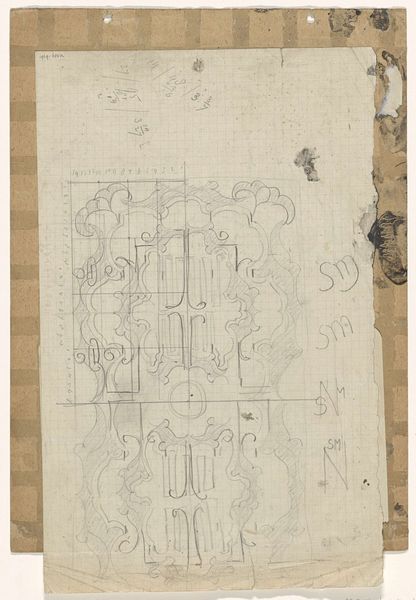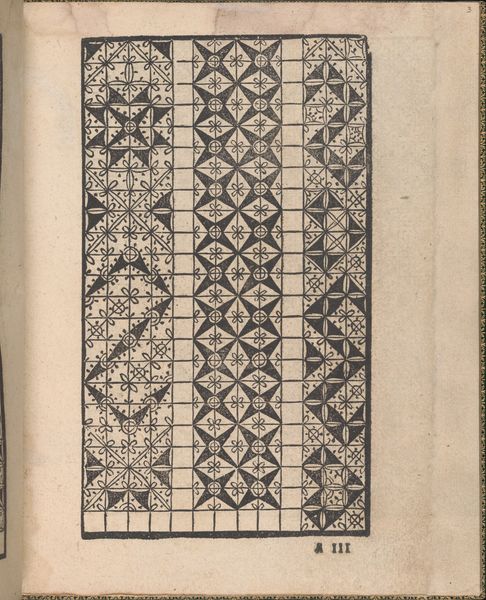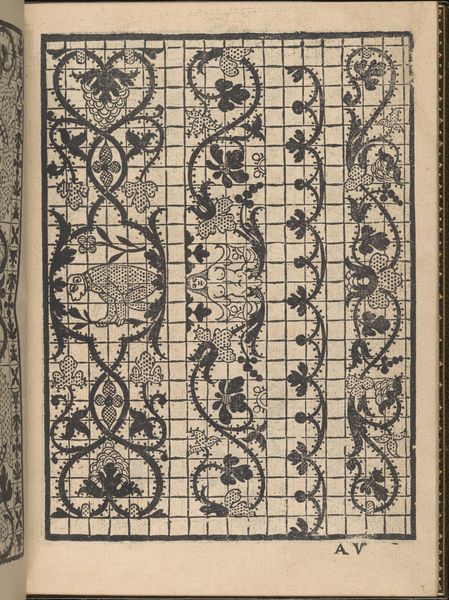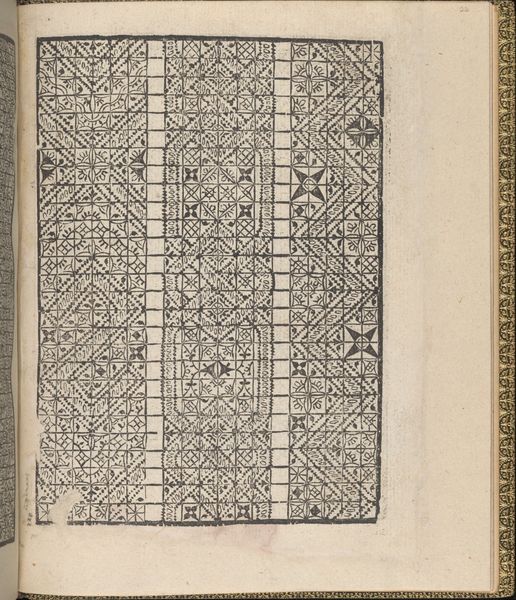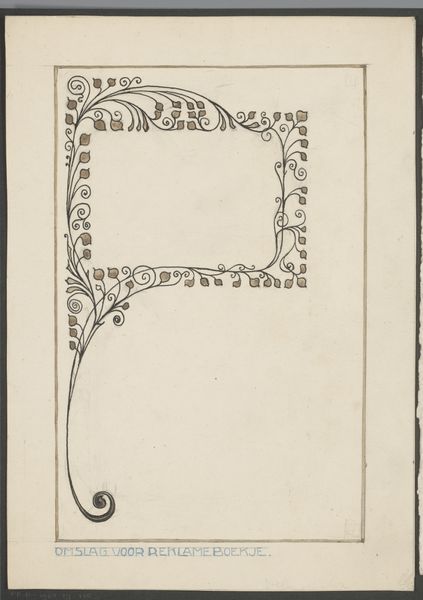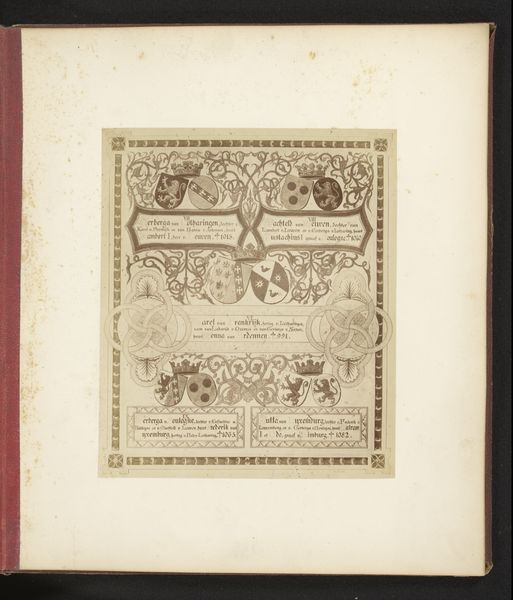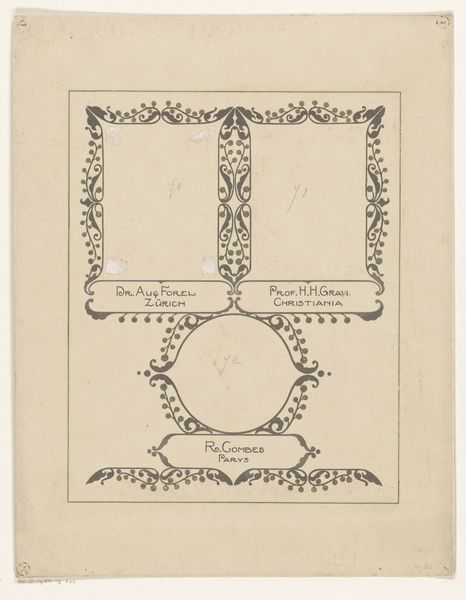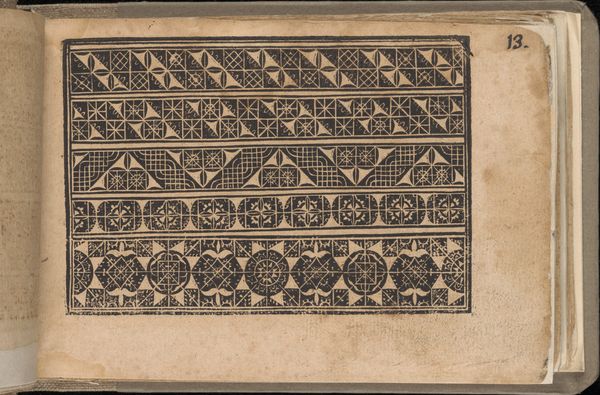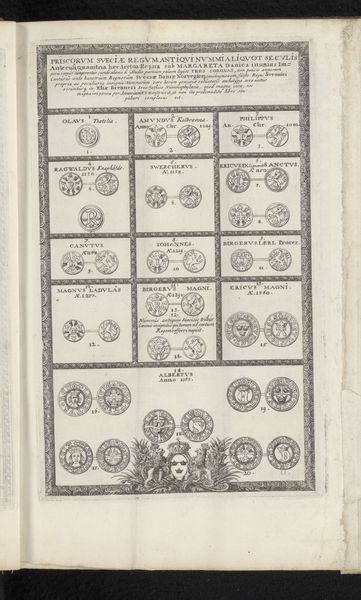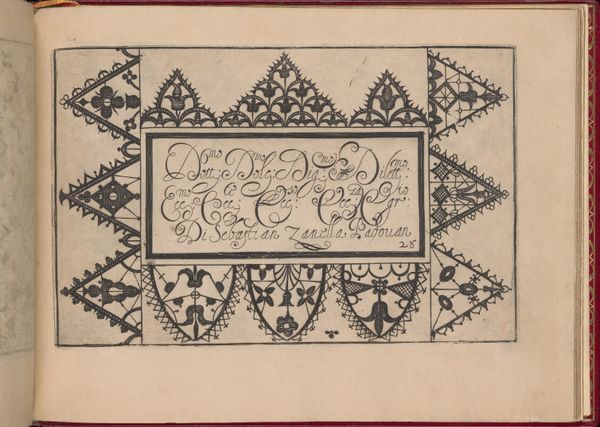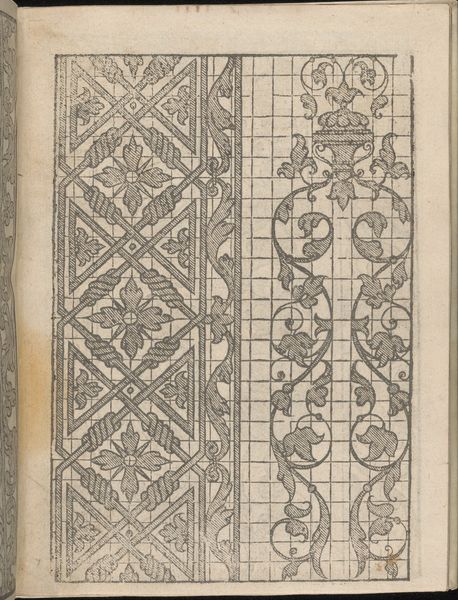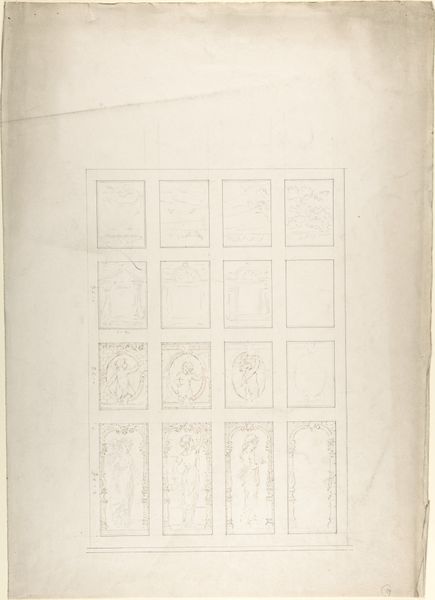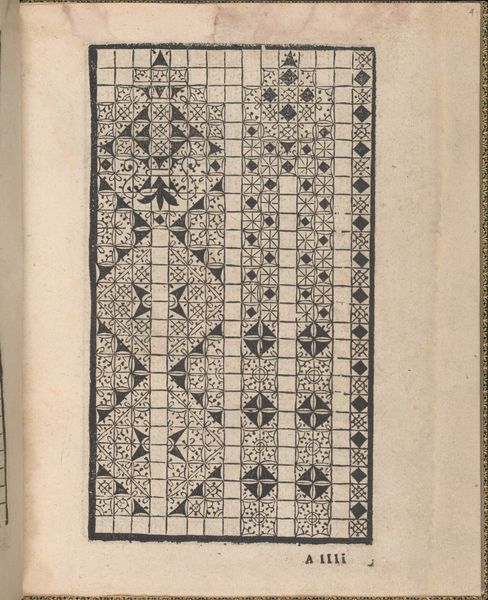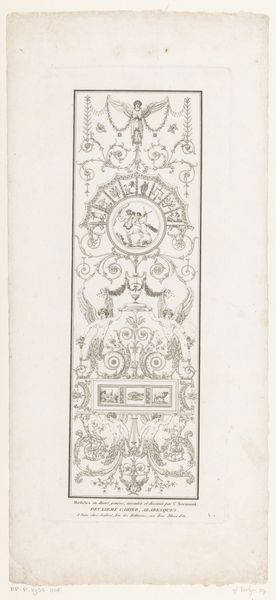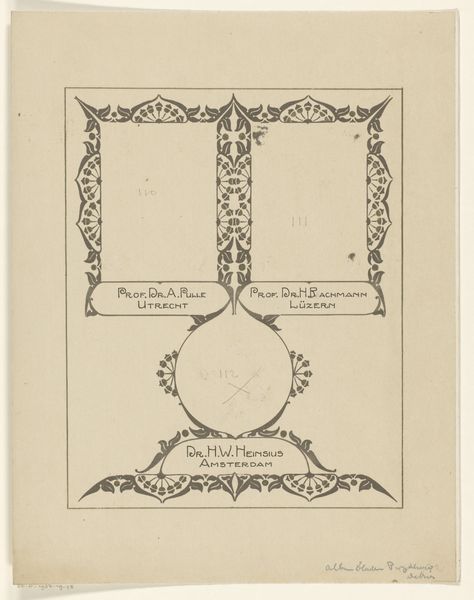
drawing, graphic-art, print, typography, woodcut, poster
#
drawing
#
graphic-art
#
comic strip sketch
#
art-nouveau
#
ink drawing
# print
#
pen sketch
#
personal sketchbook
#
typography
#
ink drawing experimentation
#
pen-ink sketch
#
woodcut
#
line
#
pen work
#
sketchbook drawing
#
storyboard and sketchbook work
#
poster
#
sketchbook art
Dimensions: height 385 mm, width 299 mm
Copyright: Rijks Museum: Open Domain
Curator: This is Carel Adolph Lion Cachet’s "Kalenderblad maart 1894," created in, well, 1894. It's currently held at the Rijksmuseum. What are your first thoughts? Editor: It has such an arresting graphic quality. The strong black and white contrast immediately draws me in. There's almost an element of playful rebellion in its design. I also notice these whimsical, stylized figures dancing above the calendar grid. What's their significance? Curator: They’re likely an example of the strong Art Nouveau influence, which embraced stylized natural forms. This wasn’t just about aesthetics; it was about integrating art into everyday life, challenging the established academic styles that had long dominated. Editor: So, art for the people, brought right into their homes in the form of a functional calendar. Did Cachet make similar artworks with radical messages that would bring to surface themes relating to identity? Curator: Absolutely. Think about the broader social and political context of the late 19th century—growing socialist movements and a questioning of traditional hierarchies. Artists were taking on a public role in imagining alternative visions of the future and addressing issues around identity. Art Nouveau’s accessibility made it a great platform for challenging socio-political forces. Editor: And look at the typography; even that seems rebellious, resisting the rigidity of standard fonts. This calendar isn't just a tool for marking days. It is imbued with commentary through artistry and challenges the expectations that the role of artists play within the construction of power. Curator: Precisely! And by integrating "high art" with a mundane object like a calendar, it questions the institutional hierarchies that often separate art from daily existence. Editor: Considering how artists like Cachet subverted expectations to explore broader themes of freedom and democratizing art in visual culture—the details of the numbers on the calendar, down to the days, become profound statements. It is about liberation. Curator: Exactly. His choice of a woodcut— a more accessible printing method—speaks volumes too. It ensured wider distribution. Editor: Looking at Cachet’s piece has underscored art's power to function not just as a decorative piece, but to actively engage, subtly critique, and suggest transformative possibilities for the collective imagination of Cachet's viewers. Curator: A great example of how design choices communicate ideologies. Thank you.
Comments
No comments
Be the first to comment and join the conversation on the ultimate creative platform.
